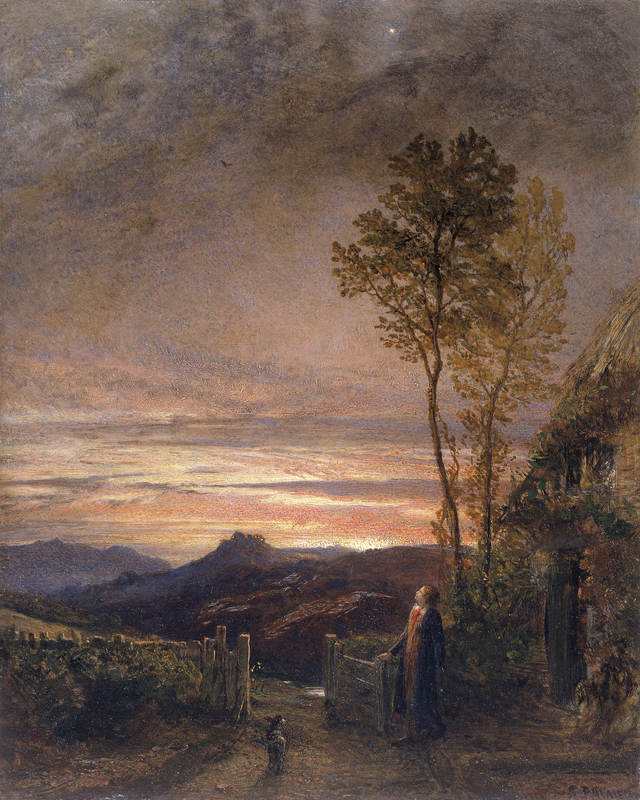A magnificent Romantic Landscape
Samuel Palmer ranks among the most important British landscape painters of the Romantic Period. The first of his paintings to enter the collections of Amgueddfa Cymru is a landscape titled The Rising of the Lark.

by Samuel Palmer.
Acquired 1990; Gift; Sidney Leigh through the National Art Collections Fund
Samuel Palmer (1805–51)
Samuel Palmer was the son of a London bookseller. His early work was profoundly influenced by the visionary poet and painter William Blake (1757–1827), whom Palmer met in 1824.
Palmer settled in the village of Shoreham in Kent. He created a symbolic language, using his pictures to celebrate the rural fruitfulness and pastoral simplicity of the world before the industrial revolution.
Palmer’s later work is more conventional and naturalistic. He travelled to Wales and other parts of Britain in the early 1830s, but no place inspired him as much as Shoreham.
Following his marriage to Hannah, the daughter of the artist John Linnell (1792—1882), his painting became increasingly geared to the requirements of the art market.
Inspired by a poem
The Rising of the Lark is inspired by lines from L’Allegro by the poet John Milton (1608–74), a favourite of the artist:
And, singing, startle the dull night,
From his watch-tower in the skies,
Till the dappled dawn doth rise’
Through the rising sun and the joyful song of the lark, Palmer suggests a new beginning. The shepherd opening the gate through which the lamb will pass into the broad landscape may symbolise the stirrings of new life.
Palmer based this oil painting on a detailed drawing dating from his later time in Shoreham. His son Alfred Herbert Palmer wrote about the picture in his biography, The Life of Samuel Palmer. He suggests that it was painted soon after his father’s return from Italy in 1839.
The Romantic Period
This painting belongs to the Romantic period. At this time many artists, musicians and writers aimed to recapture a rural lifestyle which they felt was being lost to industrialisation.